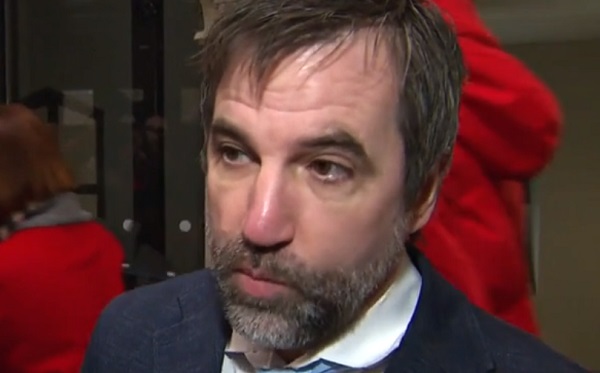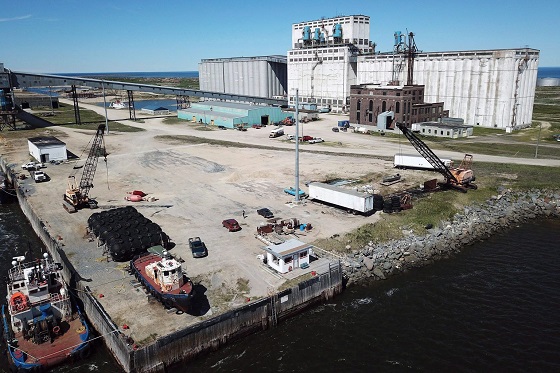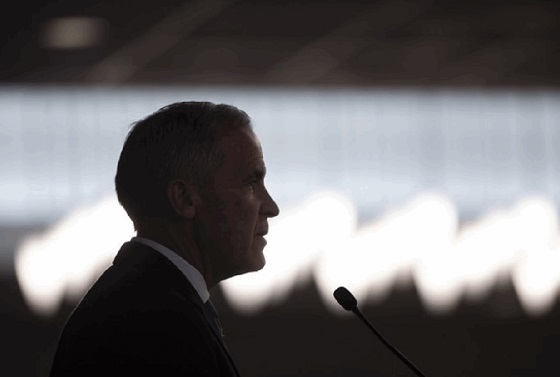Business
Federal Liberals find an improbable new tax target. Environment Minister Steven Guilbeault touts a new Global Carbon Tax

From LifeSiteNews
Canadian environment minister favors ‘global’ carbon tax on goods that could drive up prices for families
Canadian Minister of Environment Steven Guilbeault wants to create a new “global’ carbon tax applied to all goods shipped internationally that would further drive up prices for families already struggling with inflated costs for basic needs.
Guilbeault shared Wednesday on social media a post from Environment Canada that confirmed “carbon pollution pricing was discussed” at the United Nations’ COP29 Climate Change conference in Azerbaijan and “is seen by global leaders as a powerful tool for driving investments in clean technologies and accelerating economic growth.”
“Canada is more invested than ever in ensuring collective global action that responds to the growing costs of climate change and a shift toward a low-carbon clean economy,” Guilbeault said in a statement.
According to the Conservative Party of Canada, Guilbeault’s new plan would be “sent abroad to other countries” and make everything more expensive for Canadians.
“This new tax on maritime transportation would undoubtedly drive investment and business away from our already struggling port system, putting strong union jobs at risk,” the Conservatives said in a press release.
Conservatives said the new proposed tax “on shipping” is nothing more than an extra tax on “goods that are being shipped.”
“At a time when 2 million people are using food banks every month, Canadians can’t afford another failed Liberal tax grab,” Conservatives said.
“The carbon tax is nothing more than an expensive scam. It has done nothing to reduce emissions, while dramatically increasing the cost of living on the backs of working Canadians.”
Canada’s port creates $17 billion a year in economic output, according to the Association of Canadian Port Authorities.
The Conservative Party highlighted how Guilbeault’s carbon tax is costing Canadians thousands, noting that Prime Minister Justin Trudeau’s Liberal government instead wants to forge ahead and make everything more expensive.
“But instead of giving Canadians the relief they deserve, Trudeau decided to hike his carbon tax by 23 percent last spring as part of his plan to quadruple the carbon tax by 2030,” Conservatives said.
LifeSiteNews previously reported that even those in the federal government, such as the Parliamentary Budget Officer, have said Trudeau’s carbon tax is costing Canadians hundreds of dollars annually, noting that rebates are not sufficient to compensate for the increased fuel prices.
On April 1, Trudeau increased the carbon tax by 23 percent despite seven of 10 provincial premiers and 70 percent of Canadians pleading with him to halt his plan.
As reported by LifeSiteNews, a July survey found that nearly half of Canadians are just $200 away from financial ruin as the costs of housing, food and other necessities has gone up massively since Trudeau took power in 2015.
The Trudeau government has continued to push a radical environmental agenda similar to the World Economic Forum’s “Great Reset” and the United Nations’ “Sustainable Development Goals.”
The reduction and eventual elimination of so-called “fossil fuels” and a transition to unreliable “green” energy has also been pushed by the World Economic Forum, the globalist group in which Trudeau and some of his cabinet are involved.
Critics argue that instead of addressing these issues, the Trudeau government has instead used the “climate change” agenda to justify applying a punitive carbon tax on Canadians.
Some provinces such as Alberta are legally challenging the current federal carbon tax.
Not only is the carbon tax costing Canadian families hundreds of dollars annually, but Liberals have admitted that the carbon tax has only reduced greenhouse gas emissions by 1 percent.
Business
New airline compensation rules could threaten regional travel and push up ticket prices

New passenger compensation rules under review could end up harming passengers as well as the country’s aviation sector by forcing airlines to pay for delays and cancellations beyond their control, warns a new report published this morning by the MEI.
“Air travel in Canada is already unaffordable and inaccessible,” says Gabriel Giguère, senior public policy analyst at the MEI. “New rules that force airlines to cover costs they can’t control would only make a bad situation worse.”
Introduced in 2023 by then-Transport Minister Omar Alghabra, the proposed amendment to the Air Passenger Protection Regulations would make airlines liable for compensation in all cases except those deemed “exceptional.” Under the current rules, compensation applies only when the airline is directly responsible for the disruption.
If adopted, the new framework would require Canadian airlines to pay at least $400 per passenger for any “unexceptional” cancellation or delay exceeding three hours, regardless of fault. Moreover, the definition of “exceptional circumstances” remains vague and incomplete, creating regulatory uncertainty.
“A presumed-guilty approach could upend airline operations,” notes Mr. Giguère. “Reversing the burden of proof introduces another layer of bureaucracy and litigation, which are costs that will inevitably be passed on to consumers.”
The Canadian Transportation Agency estimates that these changes would impose over $512 million in additional costs on the industry over ten years, leading to higher ticket prices and potentially reducing regional air service.
Canadians already pay some of the highest airfares in the world, largely due to government-imposed fees. Passengers directly cover the Air Travellers Security Charge—$9.94 per domestic flight and $34.42 per international flight—and indirectly pay airport rent through Airport Improvement Fees included on every ticket.
In 2024 alone, airport authorities remitted a record $494.8 million in rent to the federal government, $75.6 million more than the previous year and 68 per cent higher than a decade earlier.
“This new regulation risks being the final blow to regional air travel,” warns Mr. Giguère. “Routes connecting smaller communities will be the first to disappear as costs rise and they become less profitable.”
For instance, a three-hour and one minute delay on a Montreal–Saguenay flight with 85 passengers would cost an airline roughly $33,000 in compensation. It would take approximately 61 incident-free return flights to recoup that cost.
Regional air service has already declined by 34 per cent since 2019, and the added burden of this proposed regulation could further reduce connectivity within Canada. It would also hurt Canadian airlines’ competitiveness relative to U.S. carriers operating out of airports just south of the border, whose passengers already enjoy lower fares.
“If the federal government truly wants to make air travel more affordable,” says Mr. Giguère, “it should start by cutting its own excessive fees instead of scapegoating airlines for political gain.”
You can read the Economic Note here.
* * *
The MEI is an independent public policy think tank with offices in Montreal, Ottawa, and Calgary. Through its publications, media appearances, and advisory services to policymakers, the MEI stimulates public policy debate and reforms based on sound economics and entrepreneurship.
Business
Will the Port of Churchill ever cease to be a dream?

From Resource Works
The Port of Churchill has long been viewed as Canada’s northern gateway to global markets, but decades of under-investment have held it back.
A national dream that never materialised
For nearly a century, Churchill, Manitoba has loomed in the national imagination. In 1931, crowds on the rocky shore watched the first steamships pull into Canada’s new deepwater Arctic port, hailed as the “thriving seaport of the Prairies” that would bring western grain “1,000 miles nearer” to European markets. The dream was that this Hudson Bay town would become a great Canadian centre of trade and commerce.
The Hudson Bay Railway was blasted across muskeg and permafrost to reach what engineers called an “incomparably superior” harbour. But a short ice free season and high costs meant Churchill never grew beyond a niche outlet beside Canada’s larger ports, and the town’s population shrank.
False starts, failed investments
In 1997, Denver based OmniTrax bought the port and 900 kilometre rail line with federal backing and promises of heavy investment. Former employees and federal records later suggested those promises were not fully kept, even as Ottawa poured money into the route and subsidies were offered to keep grain moving north. After port fees jumped and the Canadian Wheat Board disappeared, grain volumes collapsed and the port shut, cutting rail service and leaving northern communities and miners scrambling.
A new Indigenous-led revival — with limits
The current revival looks different. The port and railway are now owned by Arctic Gateway Group, a partnership of First Nations and northern municipalities that stepped in after washouts closed the line and OmniTrax walked away. Manitoba and Ottawa have committed $262.5 million over five years to stabilize the railway and upgrade the terminal, with Manitoba’s share now at $87.5 million after a new $51 million provincial pledge.
Prime Minister Mark Carney has folded Churchill into his wider push on “nation building” infrastructure. His government’s new Major Projects Office is advancing energy, mining and transmission proposals that Ottawa says add up to more than $116 billion in investment. Against that backdrop, Churchill’s slice looks modest, a necessary repair rather than a defining project.
The paperwork drives home the point. The first waves of formally fast tracked projects include LNG expansion at Kitimat, new nuclear at Darlington and copper and nickel mines. Churchill sits instead on the office’s list of “transformative strategies”, a roster of big ideas still awaiting detailed plans and costings, with a formal Port of Churchill Plus strategy not expected until the spring of 2026 under federal–provincial timelines.
Churchill as priority — or afterthought?
Premier Wab Kinew rejects the notion that Churchill is an afterthought. Standing with Carney in Winnipeg, he called the northern expansion “a major priority” for Manitoba and cast the project as a way for the province “to be able to play a role in building up Canada’s economy for the next stage of us pushing back against” U.S. protectionism. He has also cautioned that “when we’re thinking about a major piece of infrastructure, realistically, a five to 10 year timeline is probably realistic.”
On paper, the Port of Churchill Plus concept is sweeping. The project description calls for an upgraded railway, an all weather road, new icebreaking capacity in Hudson Bay and a northern “energy corridor” that could one day move liquefied natural gas, crude oil, electricity or hydrogen. Ottawa’s joint statement with Manitoba calls Churchill “without question, a core component to the prosperity of the country.”
Concepts without commitments
The vision is sweeping, yet most of this remains conceptual. Analysts note that hard questions about routing, engineering, environmental impacts and commercial demand still have to be answered. Transportation experts say they struggle to see a purely commercial case that would make Churchill more attractive than larger ports, arguing its real value is as an insurance policy for sovereignty and supply chain resilience.
That insurance argument is compelling in an era of geopolitical risk and heightened concern about Arctic security. It is also a reminder of how limited Canada’s ambition at Churchill has been. For a hundred years, governments have been willing to dream big in northern Manitoba, then content to underbuild and underdeliver, as the port’s own history of near misses shows. A port that should be a symbol of confidence in the North has spent most of its life as a seasonal outlet.
A Canadian pattern — high ambition, slow execution
The pattern is familiar across the country. Despite abundant resources, capital and engineering talent, mines, pipelines, ports and power lines take years longer to approve and build here than in competing jurisdictions. A tangle of overlapping regulations, court challenges and political caution has turned review into a slow moving veto, leaving a politics of grand announcements followed by small, incremental steps.
Churchill is where those national habits are most exposed. The latest round of investment, led by Indigenous owners and backed by both levels of government, deserves support, as does Kinew’s insistence that Churchill is a priority. But until Canada matches its Arctic trading rhetoric with a willingness to build at scale and at speed, the port will remain a powerful dream that never quite becomes a real gateway to the world.
Headline photo credit to THE CANADIAN PRESS/John Woods
-

 Alberta2 days ago
Alberta2 days ago‘Weird and wonderful’ wells are boosting oil production in Alberta and Saskatchewan
-

 Business2 days ago
Business2 days agoCanada is failing dismally at our climate goals. We’re also ruining our economy.
-

 Alberta2 days ago
Alberta2 days agoAlberta to protect three pro-family laws by invoking notwithstanding clause
-

 Artificial Intelligence2 days ago
Artificial Intelligence2 days agoLawsuit Claims Google Secretly Used Gemini AI to Scan Private Gmail and Chat Data
-

 Health1 day ago
Health1 day agoCDC’s Autism Reversal: Inside the Collapse of a 25‑Year Public Health Narrative
-

 Energy2 days ago
Energy2 days agoThe Carney Government is Hijacking the Phase “Energy Superpower” to Advance Their Agenda
-

 Crime1 day ago
Crime1 day agoCocaine, Manhunts, and Murder: Canadian Cartel Kingpin Prosecuted In US
-

 Health1 day ago
Health1 day agoBREAKING: CDC quietly rewrites its vaccine–autism guidance







